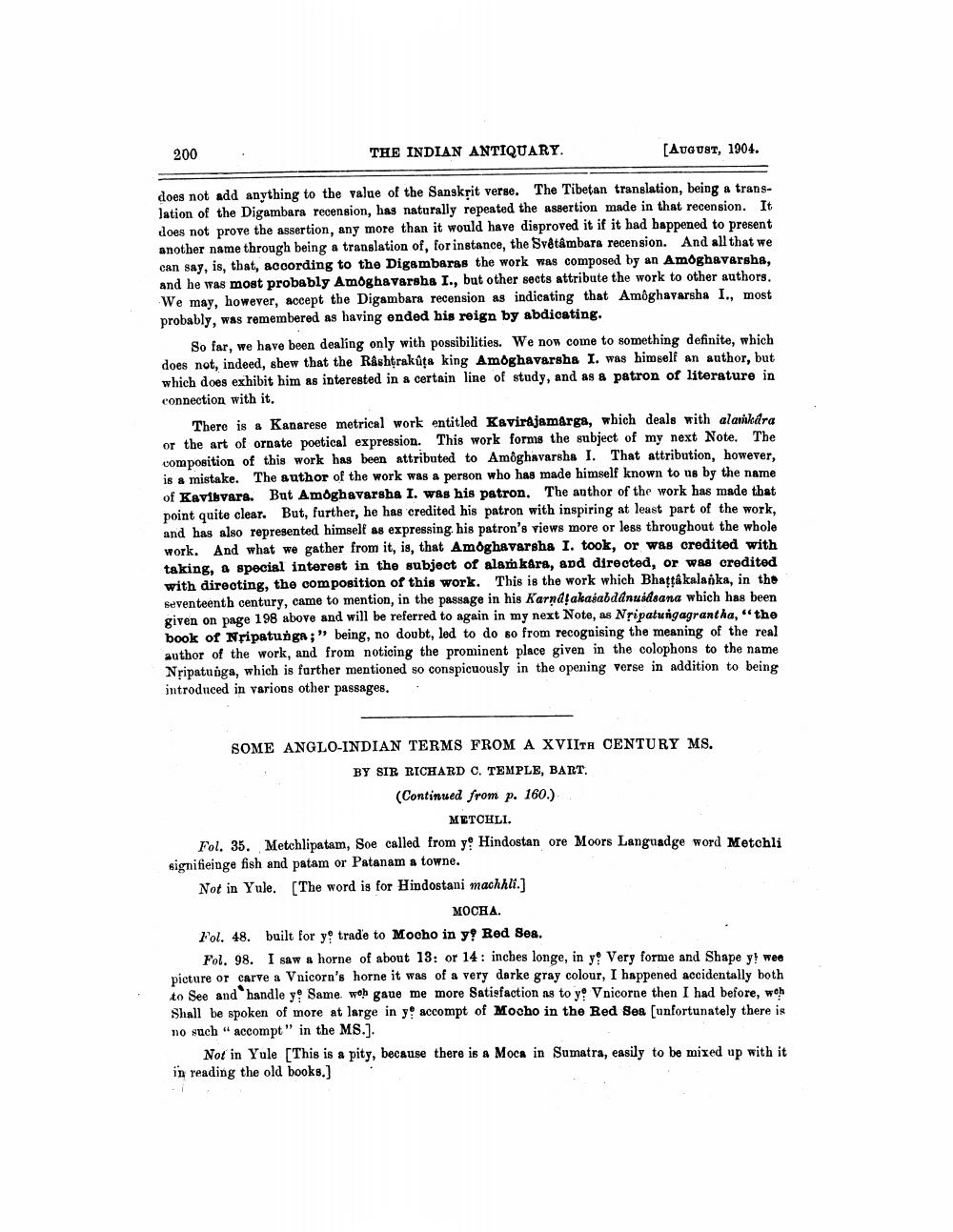________________
200
THE INDIAN ANTIQUARY.
[AUGUST, 1904.
does not add anything to the value of the Sanskrit verse. The Tibetan translation, being a translation of the Digambara recension, has naturally repeated the assertion made in that recension. It does not prove the assertion, any more than it would have disproved it if it had happened to present another name through being a translation of, for instance, the Svêtâmbara recension. And all that we can say, is, that, according to the Digambaras the work was composed by an Amoghavarsha, and he was most probably Amoghavarsha I., but other sects attribute the work to other authors. We may, however, accept the Digambara recension as indicating that Amoghavarsha I., most probably, was remembered as having ended his reign by abdicating.
So far, we have been dealing only with possibilities. We now come to something definite, which does not, indeed, sbew that the Rashtrakūta king Amoghavarsha I. was himself an author, but which does exhibit him as interested in a certain line of study, and as & patron of literature in connection with it.
There is a Kanarese metrical work entitled Kavirajamarga, which deals with alamkara or the art of ornate poetical expression. This work forms the subject of my next Note. The composition of this work has been attributed to Amoghavarsha I. That attribution, however, is a mistake. The author of the work was a person who has made himself known to us by the name of Kavibvara. But Amoghavarsha I. was his patron. The author of the work has made that point quite clear. But, further, he has credited his patron with inspiring at least part of the work, and has also represented himself as expressing his patron's views more or less throughout the whole work. And what we gather from it, is, that Amoghavarsha I. took, or was credited with taking, & special interest in the subject of alam kara, and directed, or was credited with directing, the composition of this work. This is the work which Bhattâ kalanka, in the Beventeenth century, came to mention, in the passage in his Karndtakasabdanuádsana which has been given on page 198 above and will be referred to again in my next Note, as Nripatungagrantha, "the book of Nripatunga;” being, no doubt, led to do so from recognising the meaning of the real author of the work, and from noticing the prominent place given in the colophons to the name Nripatunga, which is forther mentioned so conspicuously in the opening verse in addition to being introduced in varions other passages.
SOME ANGLO-INDIAN TERMS FROM A XVIITH CENTURY MS.
BY SIR RICHARD C. TEMPLE, BART. (Continued from p. 160.)
METCHLI. Fol. 35. Metchlipatam, Soe called from y. Hindostan ore Moors Languadge word Metehli signifieinge fish and patam or Patanam a towne. Not in Yule. [The word is for Hindostani machhu.]
MOCHA. Fol. 48. built for y trade to Mocho in yo Red Sea.
Fol. 98. I saw & horne of about 13: or 14: inches longe, in y! Very forme and Shape y! wee picture or carve a Vnicorn's horne it was of a very darke gray colour, I happened accidentally both to See and handle y! Same. woh gaue me more Satisfaction as to y Vnicorne then I had before, weh Shall be spoken of more at large in y! accompt of Mocho in the Red Sea (unfortunately there is no such "accompt" in the MS.).
Not in Yule [This is a pity, because there is a Moca in Sumatra, easily to be mixed up with it in reading the old books.)




